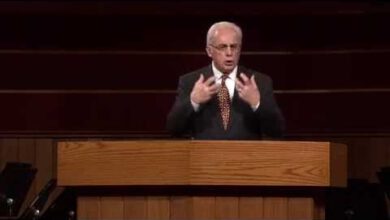The Most Misunderstood Parable (Luke 10:30–37)
Parables are familiar to many, yet often misunderstood. One example is the parable I want to highlight this morning. Open your Bible to Luke 10:30, where we encounter the well-known parable of the Good Samaritan—recognized by both Christians and non-Christians alike.
We all understand the meaning of calling someone a “Good Samaritan.” It’s a compliment, signifying someone who shows kindness, compassion, and care to those in need. This is virtuous, and God is honored by such acts. However, despite its popularity, the parable of the Good Samaritan is frequently misunderstood.
While many are familiar with the story, they often miss its deeper meaning. This is partly because the truth within our Lord’s parables is sometimes hidden. In Luke 10:21, Jesus rejoices in the Holy Spirit, saying, “I praise You, O Father, Lord of heaven and earth, that You have hidden these things from the wise and intelligent, and revealed them to infants. Yes, Father, for this way was well-pleasing in Your sight.” In verse 23, Jesus privately tells His disciples, “Blessed are the eyes which see the things you see, for I say to you, that many prophets and kings wished to see what you see, but did not, and to hear what you hear, but did not hear it.”
Parables are often a direct means by which our Lord reveals truth to His disciples while concealing it from His rejecters. Thus, non-believers may flatten this story into a simple lesson on kindness, which is an expected misunderstanding. For believers, the message should be clear, though we may still need some guidance. Throughout church history, this parable has been subject to various interpretations—some quite bizarre and allegorical. Even today, it is often misused to defend the church’s position on social justice, with some linking it to socialism or even Marxism.
Let’s revisit the story in Luke 10:30. “Jesus replied and said, ‘A man was going down from Jerusalem to Jericho, and fell among robbers, who stripped him, beat him, and left him half-dead. By chance, a priest was going down the road, and when he saw him, he passed by on the other side. Likewise, a Levite, when he came to the place and saw him, passed by on the other side. But a Samaritan, who was on a journey, came upon him, and when he saw him, he felt compassion. He went to him, bandaged his wounds, poured oil and wine on them, put him on his own animal, brought him to an inn, and took care of him. The next day, he took out two denarii, gave them to the innkeeper, and said, ‘Take care of him, and whatever more you spend, I will repay you when I return.’ Which of these three do you think proved to be a neighbor to the man who fell among the robbers?’ He said, ‘The one who showed mercy.’ Jesus said, ‘Go and do likewise.'”
It’s a simple, easy-to-understand story, with a clear message: the neighbor is the one who shows mercy. However, early church fathers, like Origen, created strange allegories around this parable, suggesting hidden meanings. For example, Origen claimed that the man represents Adam, Jerusalem symbolizes paradise, Jericho signifies the world, the robbers are hostile forces, and the Samaritan is Christ. He even went as far as interpreting the wounds as disobedience and the animal as the Lord’s body.
This interpretation, while imaginative, is far from the parable’s intended message. John Calvin criticized it, saying it entirely missed the point of the story. The parable is not an allegory, as Scripture contains no hidden, mystical meanings to be uncovered. Modern interpretations also often miss the mark. When discussions revolve around poverty or social issues, the story of the Good Samaritan is frequently misapplied.
